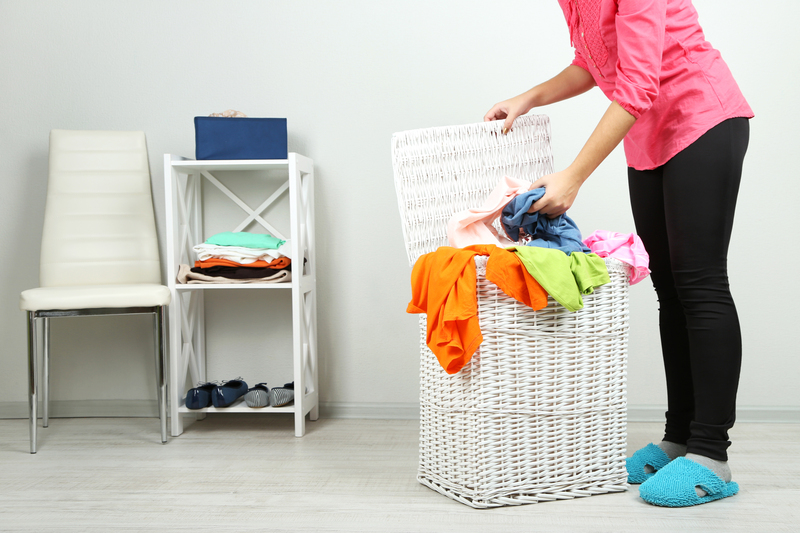Breathing Clean: The Unseen Pillar of Indoor Health
Posted on 30/09/2025
Breathing Clean: The Unseen Pillar of Indoor Health
When it comes to leading a healthy life, we often prioritize balanced diets, fitness regimens, and regular checkups, but there's an overlooked yet critical component: indoor air quality. This factor, while invisible, is one of the foundational elements for sustaining our health and well-being at home, at work, and at school. In the era when people spend about 90% of their time indoors, understanding and optimizing indoor air quality becomes not just a matter of comfort, but a decisive step toward holistic wellness.
Why Indoor Air Quality Matters
Clean air is essential for life. However, the air we breathe indoors is often far from pure. According to the U.S. Environmental Protection Agency (EPA), the concentrations of some pollutants can be 2 to 5 times higher indoors than outdoors. Children, elderly people, and those with preexisting health conditions are particularly vulnerable to the effects of polluted indoor air.
Consequences of Poor Indoor Air
- Respiratory conditions: Pollutants like dust, mold, and pet dander can exacerbate asthma and trigger allergies.
- Increased illness risk: Bacteria and airborne viruses can thrive in stuffy or poorly ventilated spaces, increasing the chances of illness.
- Long-term effects: Continued exposure to certain pollutants (e.g., radon, volatile organic compounds) has been linked to serious conditions such as cancer.
- Cognitive impact: Studies reveal that elevated indoor pollution can impair concentration, productivity, and mental clarity.
The unseen pillar of health inside every building is the air we breathe--a mixture easily compromised by daily activities and home features.

Major Sources of Indoor Air Pollution
Several common sources can degrade air quality within our living and working environments. Identifying these is the first step in cultivating pure indoor air.
- Combustion sources: Gas stoves, fireplaces, and heaters can release nitrogen dioxide, carbon monoxide, and particulates.
- Building materials and furnishings: Carpets, paints, and pressed-wood products often emit volatile organic compounds (VOCs).
- Household products: Cleaning agents, air fresheners, and personal care products may introduce chemicals into the air.
- Mold and mildew: Damp or humid areas promote fungal growth, which releases spores.
- Pest-related allergens: Dust mites, cockroaches, and pet dander contribute to indoor air pollution.
- Outdoor pollutants: Pollen, vehicle emissions, and industrial pollutants can enter through open doors or windows and become trapped inside.
Invisible Threats: The Case of Radon and VOCs
Radon, a naturally occurring radioactive gas, is the second-leading cause of lung cancer in the United States. It can seep into buildings from the ground and accumulate to dangerous levels. VOCs, meanwhile, are emitted as gases from certain solids or liquids and include a variety of chemicals, some of which may have short- and long-term health effects.
Who Is Most at Risk?
Not everyone experiences poor indoor air in the same way. Factors like age, genetics, preexisting health conditions, and lifestyle play significant roles. Those at increased risk include:
- Children and the elderly
- Individuals with respiratory diseases (e.g., asthma, COPD)
- Pregnant women
- Workers in enclosed environments (e.g., offices, schools)
For these vulnerable groups, maintaining air quality is more than a matter of comfort--it's a lifelong health imperative.
Measuring Indoor Air Quality
Assessing the purity of indoor air is vital for identifying invisible risks. Modern technology has enabled more accurate, real-time measurements of pollutants and air composition.
Key Indicators of Healthy Air
- Levels of carbon monoxide (CO)
- Particulate matter (PM10 and PM2.5)
- Concentrations of VOCs
- Humidity and mold spore counts
- Presence of allergens
- Radon levels
Many affordable air quality monitors now allow for easy detection of multiple contaminants. Local authorities or certified professionals can assist in thorough testing for more serious concerns like radon.
Clean Indoor Air: Simple Strategies for Success
Improving air quality inside your home or workplace doesn't always require major renovations. Adopting consistent, proactive routines can make a remarkable difference.
Top Tips for Healthier Indoor Air
-
Ventilate regularly:
Open windows and use exhaust fans, especially during cooking, cleaning, or any activity that generates moisture or emissions. -
Manage humidity:
Keep humidity between 30-50% to inhibit mold growth and dust mites. Consider using dehumidifiers in damp areas. -
Control sources of pollution:
Choose fragrance-free or low-VOC household products, maintain appliances, and avoid smoking indoors. -
Implement effective cleaning routines:
Vacuum carpets and rugs at least weekly using a HEPA filter, and dust surfaces with damp cloths to avoid stirring up particles. -
Incorporate air purifiers:
Use high-efficiency particulate air (HEPA) filters to remove allergens and particulates, especially in bedrooms and living areas. -
Houseplants for air quality:
Certain plants, like spider plants and peace lilies, can help absorb some toxins, though they shouldn't be your only solution. -
Maintain HVAC systems:
Change filters regularly and schedule professional maintenance to avoid circulation of dust and pollutants. -
Test for radon:
Home test kits are widely available and can identify if mitigation is required.
Breathing Clean at Work and in Public Facilities
Indoor air quality has a profound effect on productivity and public health in offices, schools, hospitals, and commercial buildings. Facility managers can ensure well-being by:
- Installing proper ventilation systems
- Monitoring pollutant levels routinely
- Educating building occupants about pollution sources and safe practices
- Implementing green cleaning programs
Large-scale interventions, combined with education and open communication, build occupants' trust and foster a healthier, more productive environment.
Emerging Trends and Technologies
As the link between clean indoor air and well-being gains prominence, new innovations are shaping the future of indoor health.
- Smart air purifiers: Devices equipped with sensors to automatically adjust to real-time air quality data.
- IoT monitoring systems: Integration with smartphones or building systems to provide alerts and enable remote adjustments.
- Green building standards: Certifications like LEED and WELL focus on healthy materials and ventilation to ensure air quality from the outset.
- Improved building design: Trends highlight passive ventilation, use of low-emission materials, and borrowing nature's purifying power through biophilic design.
These advancements underline a growing recognition: the air inside is as vital as the air outside, and proactive choices shape healthier futures.

FAQs on Clean Indoor Air
How often should I change my home air filter?
It's recommended to replace or clean HVAC and air purifier filters every 1-3 months, depending on usage and manufacturer guidelines. Households with pets or allergies may require more frequent changes.
Are air purifiers effective for all types of pollutants?
HEPA filters are excellent for trapping dust, pollen, and pet dander but are less effective against gases like VOCs. For chemical pollutants, activated carbon filters may be required.
How can I test my home for radon?
Affordable radon test kits are available at hardware stores and online. For reliable results, professional inspectors can conduct thorough testing and advise on remediation if necessary.
Do houseplants really improve indoor air quality?
Some plants offer modest benefits by absorbing certain airborne toxins, but their effect is generally limited in comparison to ventilation and filtration. Use them to complement--never replace--other strategies.
Conclusion: Make Breathing Clean Your Priority
Clean indoor air is an invisible but essential foundation of good health. It shapes our energy, mood, cognitive function, and resilience against disease. From parents and teachers to business owners and healthcare professionals, everyone benefits from placing air quality at the center of their health strategy.
- Identify pollution sources in your spaces
- Act on proven strategies for improvement
- Invest in measurement and monitoring tools
- Never underestimate the power of clean air to transform your quality of life
Breathing clean inside your home or workplace is not a luxury--it is the unseen pillar that supports every other aspect of health. Make it an everyday commitment, and experience the difference for yourself and those you care about.
Remember: Your journey toward health and wellness begins with every breath you take. Let's ensure each one is as clean as possible.




